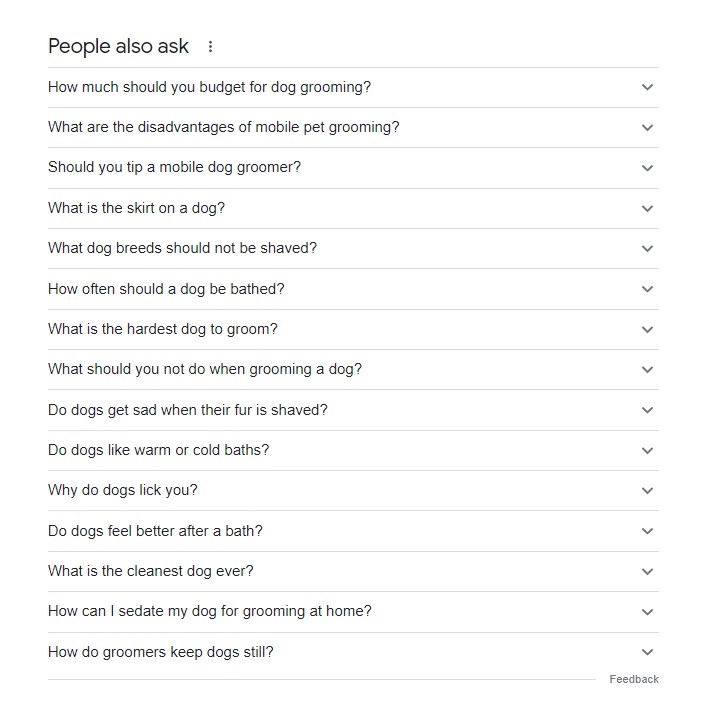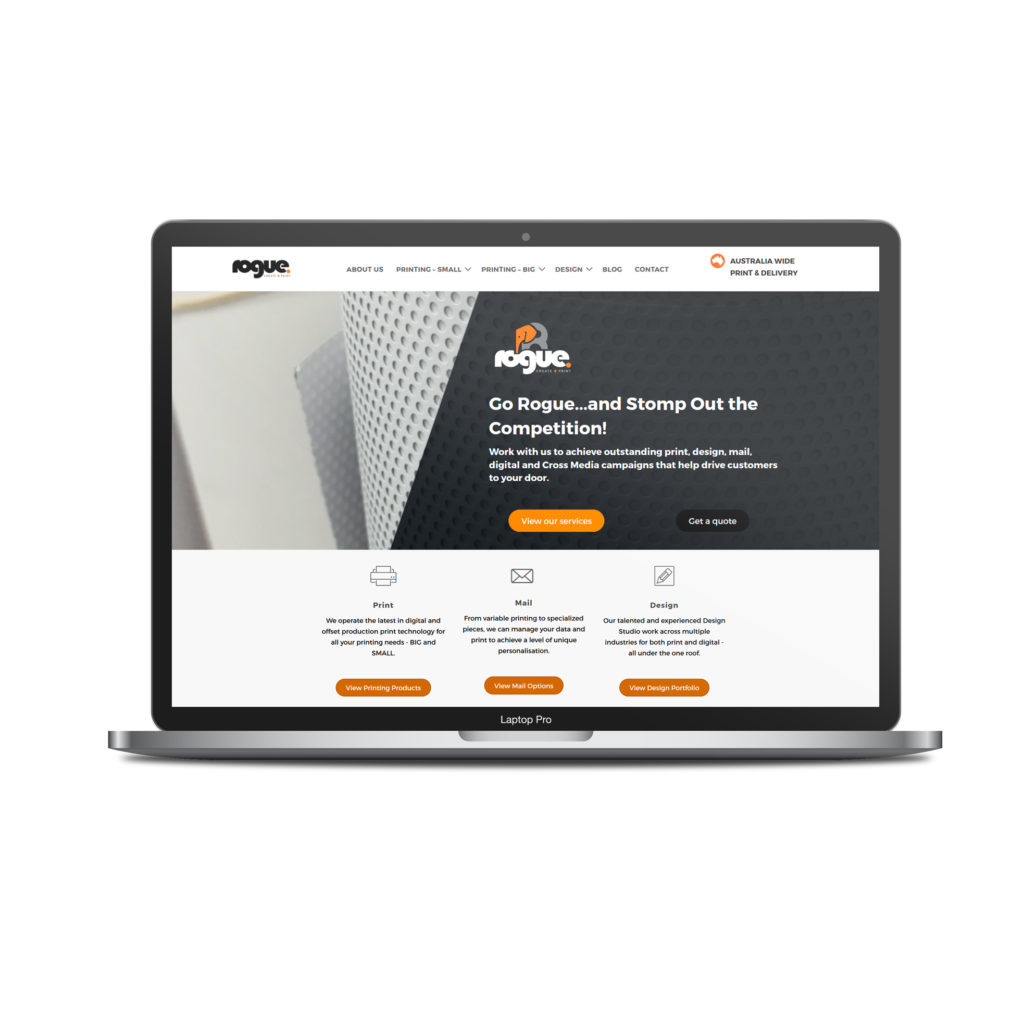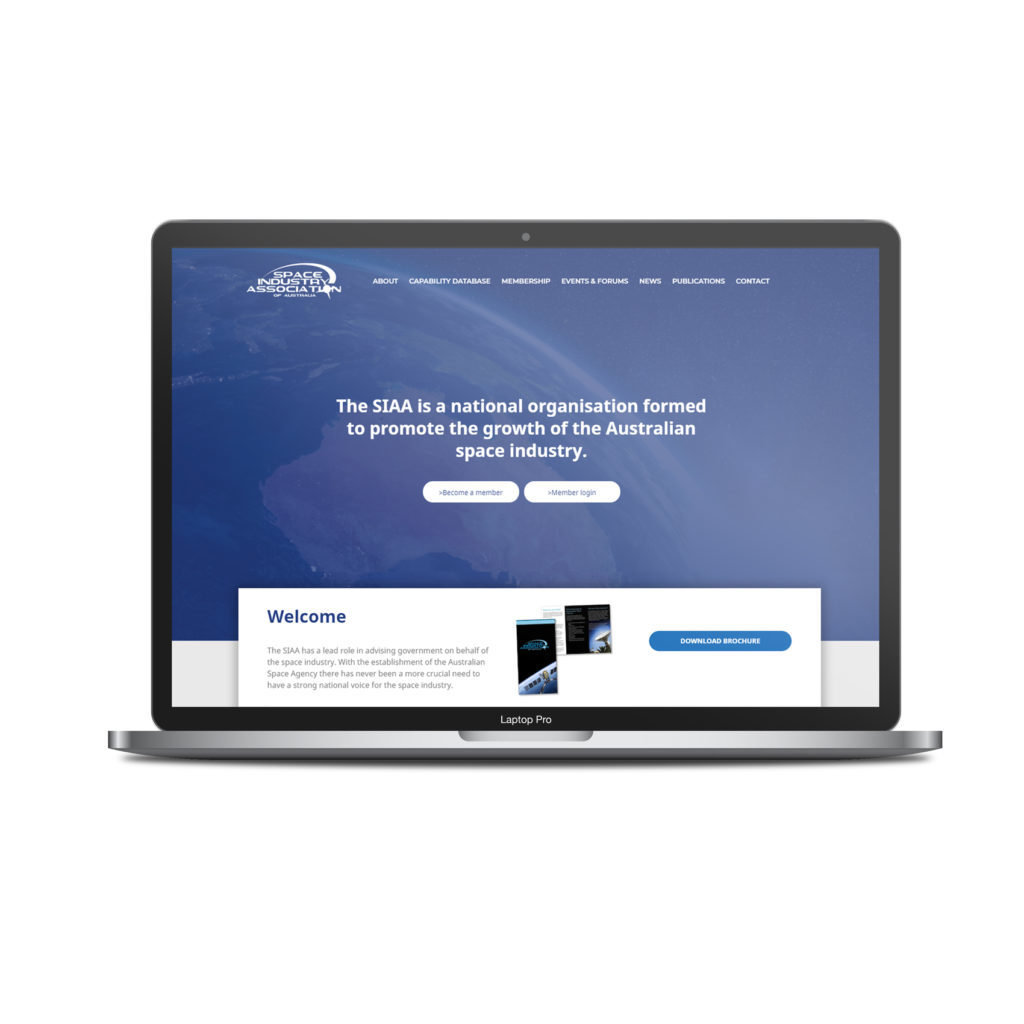How to get your new website to show on google
A question I get asked frequently by new clients after launching their new website … “How do I get my website to show on google? I’m not getting any visits”. I get the frustration. So today I’ll share 5 simple tips that work for me.
So, you’ve just launched your site.
You are excited about the possibilities that lay ahead and keen to start getting new customers.
You jump onto google, type your website and then…crickets.
Where is your site?!
1. How google works (simple explanation)
The simplest way to understand how Google works is to remember that it’s bots do four things:
1. Discover. Google uses automated software called “Googlebot” to crawl websites on the internet. To crawl a site, the site needs to be discoverable. There are a few technical things you need to do to your site so it can be found. I’ll expand in the next section.
2. Crawl. Googlebot starts by visiting a few web pages on a website and following links to other pages on the same site. This process is repeated until Googlebot has crawled as many pages as possible.
3. Index. After Googlebot has crawled a web page, the information on that page is added to Google’s index. This is like a giant library of all the web pages Google has crawled. Google’s index is constantly updated.
4. Serve. When someone types a search query into Google, Google uses an algorithm of a huge number of ranking factors to determine which pages from the index are the most relevant to the search query.
What are the ranking factors? Experts in the space agree there is a whopping 200 + factors, summarised in this article by Backlino.
Don’t worry I’ll touch on the important ones in this article.
For now, let’s start at the beginning:
2. Ensure the site can be crawled
Any site built by us will have all of this sorted.
But if you are Doing-It-Yourself then this can be an overlooked but significant step.
If you are working in WordPress, before you publish your site, WordPress will have a default setting that discourages search engines from indexing the site.
This makes sense. If you are working on a site, you don’t want the site showing up if it’s not finished.
But once you publish – make sure the untick the below button!
It is found in the admin panel under Settings – Reading.
If you aren’t using WordPress, check with the platform how they manage ‘no index / no robots’ settings on the site.

3. Submit your sitemap to Google Search Console
You can give the googlebots a little heads up by submitting a sitemap!
They will eventually find it anyway but I have found this speeds up the process on average by a week or two.
How to do this: set up Google Search Console.
Google Search Console is a free tool that shows how your website is performing on Google search. It provides detailed analytics, broken down by page, query and country, as well as crawl errors and security issues.
Importantly, it allows you to submit a sitemap to Google.
A sitemap is a document that Google’s bots read to understand the contents of a site, such as the page links, images, categories etc.
To find your sitemap, simply add /sitemap.xml to your domain name. You will see a plain text list of pages on your site.
To set up Google Search Console (GSC), go to their website, use your google account to sign in and then add your website as a property.
That may involve placing a bit of code somewhere on your site, which you can ask a person you know who is good at tech stuff to do for you.
Once you are verified, go to indexing – sitemap and add sitemap.xml to the already existing domain, as per below.
After that – wait a couple of days and you’ll see if the pages are in the index.
You can also type site:yourdomain (i.e. site:roguewebdesign.com.au) and, if indexed, you will see all pages currently in Google’s index.
If you aren’t, in GSC, you’ll see why and links to articles on how to fix it.

4. Perform some basic “on-page” SEO
Now our site can be discovered and crawled, we need to influence how the site is indexed and hence served to users.
This is where we perform some basic SEO, in the form of ‘metadata’ on each page.
Metadata is pretty important…it helps people searching on google to understand what your page is about. Case in point – see the below, this is how our ‘services’ page looks on Google.
While it is up to Google with what they show in search results (it will depend on the query typed), you have a better shot at controlling the outcome by adding this metadata to your pages.

Here’s how to do that:
- For each page, think of the main keyword someone might use to find it. That is now the page title.
- Now, write a short description of what a user will get out of the page when they click on it. Imagine your ideal client and what they would want to read to make them click to read. That is now the Page Description.
Congratulations! You have just written the metadata.
Now, to insert this into your pages:
If using WordPress, use a plugin like Rank Math or Yoast. Any other reputable website platform will have an area to enter a page’s SEO. You will need to do these at a minimum:
- Page title: use the title you made above. Around 70 characters.
- Page url. Make the url similar to or at least contain the keyword.
- Page description: use the description you made above. Around 250 characters.
5. Content, content, content
Google’s search algorithm is designed to reward websites that provide value to visitors through helpful content showing trust, expertise, experience and authority.
If you want to show up on Google, you need to make sure that your content is top-notch.
An easier way to think about content is this: if you want to turn up on Google for a keyword / search term / query…you need content about that query.
To have content about a query, you have to reverse engineer things.
Here’s what I mean by that.
Let’s say you are a mobile dog washing company in Essendon, Melbourne, and you want to rank for the term “mobile dog grooming essendon”.
Google the term and have a look at what shows up.

First, we can see a bunch of Google maps listings.
So, get your business on maps by setting up Google Business, which is free.
I go into that in my other article explaining quick SEO wins.
After that, I see a lot of organic (not ad) listings.
Take note of the descriptions and title in the listings.
Click on each page and pretend you are a client:
- what works well?
- what doesn’t?
- what’s missing?
- what kind of content is this?
- what media is being used?
- what questions are and aren’t being answered?
Use that list to put together a topic outline.
Perhaps you need:
- 5 images,
- a price list,
- a list of services,
- a list of all the areas within the postcode you commonly visit, and
- a few testimonials.
See if there any ‘People Also Ask‘ questions on the google results page.
Click on the relevant questions (this will make more appear) and copy and paste them and answer them on your page!

You want your page to provide the best experience that will quickly answer the user’s question.
And, it needs to do that better than any other page in the search results.
A few other tips:
- Make sure your content is original and not copied from other sources.
- Further to the above, avoid 100% AI generated copy. Google’s 2024 algorithm update specifically targets this.
- Make sure that your content is well-written, proofed and easy to read. Use short paragraphs, bullet points, and headings to make your content more readable.
- Focus on the keyword and close variations of that keyword. Use the keyword in the page title, description, url and in the first paragraph. Use a variation of it another 1-2 times throughout the content. Make it obvious to google what the page is about.
- You are trying to rank a page, not an entire site. Always focus on search terms and page content around that term.
- Link to your new page from other pages in you site, where it would make sense to do so. Google uses links to understand a site’s pages and to discover new content. For example, here is me linking to the page on our site that describes our SEO services. You will notice I linked text that described the page rather than saying ‘read here’. This is because anchor text is an important ranking factor.
- Lastly – promote your page. Social media is a great, free way to do this. Add your site to relevant directories and service pages. It will also help you get valuable links to your site from other sites – another ranking factor.

About Rogue Web Design
We are the web design and digital marketing branch of Rogue Create + Print. We are one of the only agencies in Australia that can provide a complete print to web solution, under one house, with NO offshore contractors.
More Articles:

Google’s Featured Snippets: Quick Start Guide
Article written by Susan Waterer of Waterer Communications in conjunction with Rogue Web Design. Read the featured snippet article on Waterer Communications blog. Snippets. Do you use them? Do you know what they are? In this quick guide, we provide an overview of the featured snippet, and how these brief extracts could bring big benefits…

How to get your new website to show on google
A question I get asked frequently by new clients after launching their new website … “How do I get my website to show on google? I’m not getting any visits”. I get the frustration. So today I’ll share 5 simple tips that work for me. So, you’ve just launched your site. You are excited about…

How To Save Images for Web in Photoshop
In this article I’ll go through each step you need to take to save images for web in Photoshop, including how to balance size vs resolution, and optimising for SEO.

5 Quick SEO Wins You Can Implement Today
Looking for a few quick SEO Wins? Look no further. Here are 5 tried and tested tactics that you can implement today with little technical knowledge.

Business basics grants qld – opening soon
Round 3 of the Business Basics grants qld program opens 9am, 16 May 2022 for businesses based in South East Queensland (SEQ) and regional Queensland.

4 Tips to Optimise your Web Pages for Search Engines
Experts in the SEO space all agree there is over 200 known ranking factors. Fortunately, there are some tried and true wins for optimising individual web pages so they rank higher in the SERPS.

Why You Need A Blog On Your Real Estate Website
While there are a number of real agents and companies that are leveraging blogs to support their sales interactions, there’s not nearly enough. Having a blog where you post valuable content for potential clients can make a huge impact in your business. Read three reasons Why You Need A Blog On Your Real Estate Website.

Rogue Create + Print Website
rogue create + print Launched: 2019 | Project length: 3 months Yep, that’s right. We revamped our own website for our print arm of Rogue extensively from the ground up. We moved from a static and restricted (and outdated) site, to dynamic WordPress CMS with cloud hosting that is fully optimised for today’s digital marketing demands. We added…

Space Industry Association of Australia Website
space industry association of australia (siaa) Launched: 2019 | Project length: 1 month SIAA approached Rogue after working with us for their print requirements. They wanted to revamp their online presence to reflect their evolution and growth as the Australian space industry’s leading professional organisation. Their old website had aged considerably, in that there needed to be significant…

LumaExit Website
Luma Exit Launched: 2020 | Project length: 2 weeks Luma Exit worked with the Rogue web design team to update their online presence from a site previously created in a free site builder. The site now reflects the professional presence, functionality and responsiveness their brand deserves. The site now features a blog, product pages, case…

Free Website Audit
obligation free With our obligation free website audit, our professional team will assess your current platform, speed, SEO, design, hosting and other requirements. We will then provide a one page report with actionable recommendations. Once you’ve received your report, and you want us to quote, you can get in touch or fill in our online…

Portfolio
Seeing is Preview text See the solutions we can create for your brand. form and Preview text Latest in technology, speed and performance – without breaking the bank. websites that Preview text And nothing that doesn’t. View our latest work click any site below to view our Preview text HPV+ME campaign website Huntly Common website…
